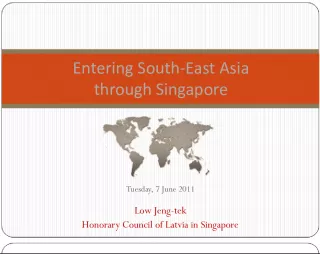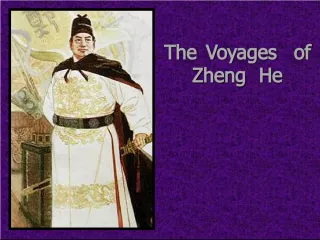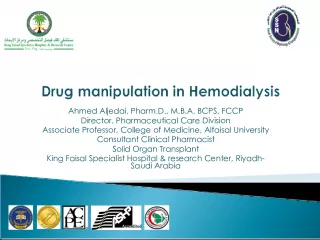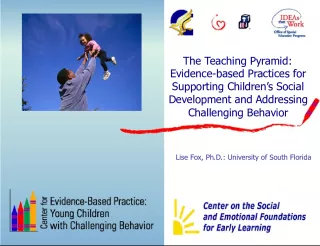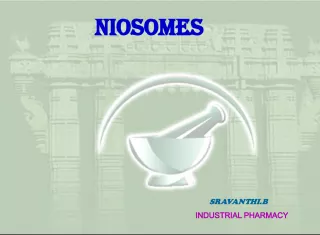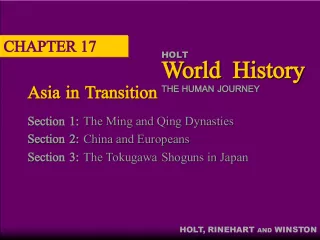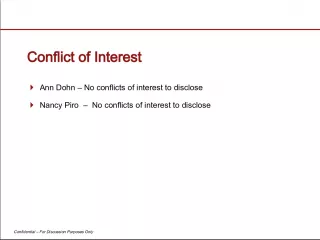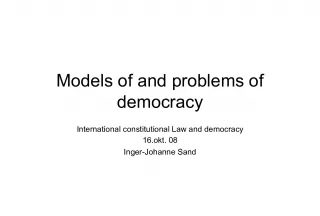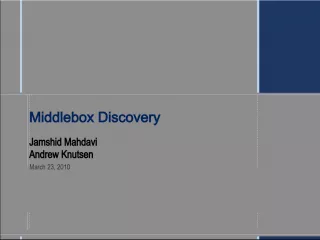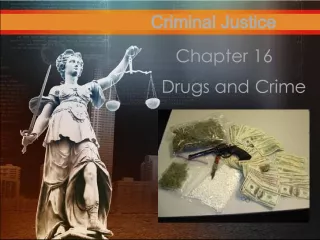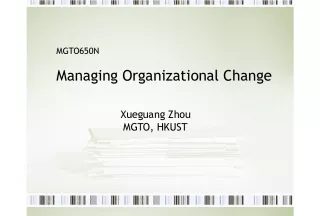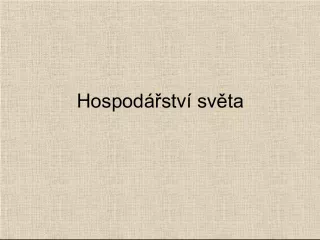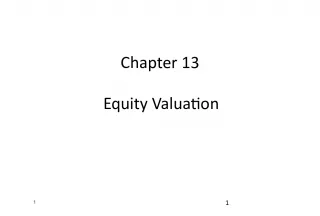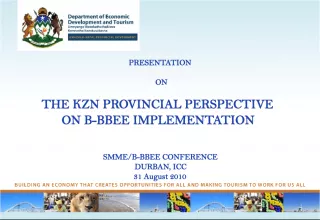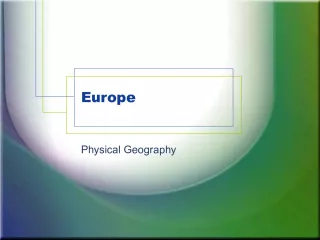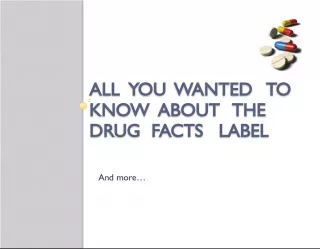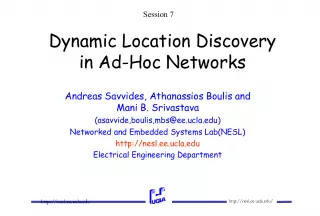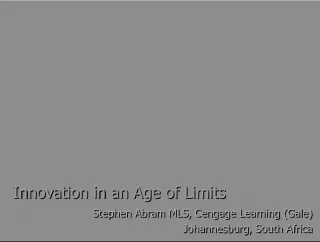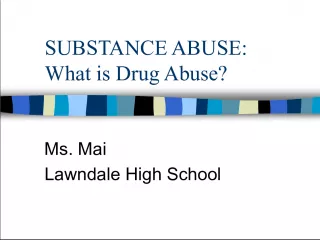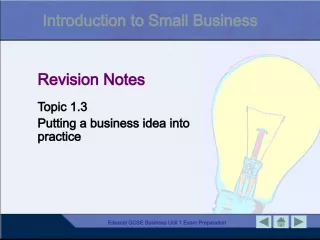Challenges and Business Models in Drug Discovery and Development in South Asia
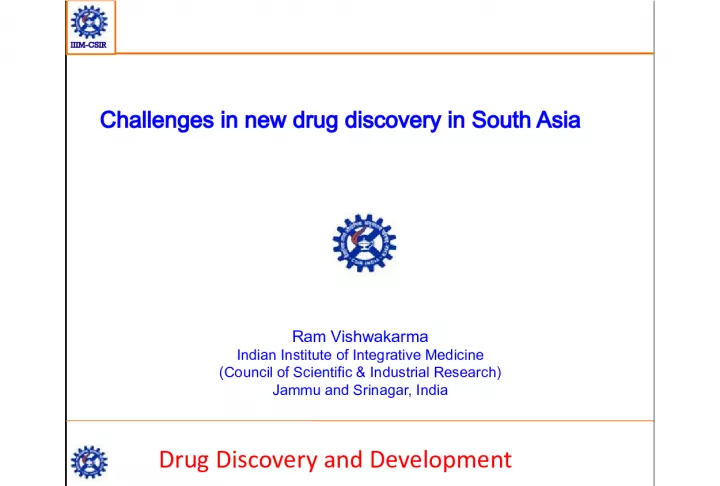

This article delves into the challenges faced in drug discovery in South Asia and the current business models for drug development. It explores the production of new drugs, biologics, generic drugs, and API formulations, discussing the roles of Big Pharma, Biotech companies, and Indian and Chinese companies in contract research, API manufacturing, and clinical trials.
- Uploaded on | 0 Views
-
 raymondevon
raymondevon
About Challenges and Business Models in Drug Discovery and Development in South Asia
PowerPoint presentation about 'Challenges and Business Models in Drug Discovery and Development in South Asia'. This presentation describes the topic on This article delves into the challenges faced in drug discovery in South Asia and the current business models for drug development. It explores the production of new drugs, biologics, generic drugs, and API formulations, discussing the roles of Big Pharma, Biotech companies, and Indian and Chinese companies in contract research, API manufacturing, and clinical trials.. The key topics included in this slideshow are IIIM CSIR, Drug Discovery, Business Model, Biologics, Generic Drugs, Clinical Trials,. Download this presentation absolutely free.
Presentation Transcript
1. IIIM-CSIR Challenges in new drug discovery in South Asia Ram Vishwakarma Indian Institute of Integrative Medicine (Council of Scientific & Industrial Research) Jammu and Srinagar, India
2. IIIM-CSIR Drug Discovery and Development (Current Business Model) New drugs: Small organic molecules and therapeutic proteins (biologics) Big Pharma and Biotech companies (US, Europe, Japan) Generic drugs: API formulation of off-patent drugs for domestic/world market Indian and Chinese companies Contract research, API manufacturing and Clinical trials services Indian and Chinese companies
3. IIIM-CSIR Time tested model for new drug discovery Natural products (plants and microbial species) and traditional system of medicine and ethno-biology (Opiates, statins, antibiotics, rapamycin, ephedrine, quinine, artemisinin, amphotericin, vincritine, taxol, podophyllotoxin (almost all anticancer and anti- infective drugs are natural products derived) Medicinal chemistry of know bioactive compounds (drugs) to decipher structure-activity relationship (SAR) and discovery of new pharmacological activity A single chemical motif gave rise to antibiotics, hypoglycemic agents, diuretics, and antihypertensive drugs
4. IIIM-CSIR Random screening of compound libraries by HTS against clinically validated targets (enzymes, receptors etc) relevant to the disease Hits lead drug candidate (medicinal chemistry) Mechanism based drug design and discovery (antimetabolites, methotrexate, trimethoprim, antidepressants, steroids like contraceptives and anti-inflammatory drugs) Structure based drug design (X-ray crystallography, NMR spectroscopy, molecular modeling) (Imatinib) Observational pharmacology (off-target optimization) Sidnafil citrate (Viagra), Cialis and other PDE5 blocker)
5. IIIM-CSIR Most Successful Biological Targets
6. IIIM-CSIR Lead Discover y Pre- clinical Regulatory approval M a r k e t i n g Phase I IND Phase II Phase III NDA Target Id 14 Years 0 6 4 2 12 10 8 Drug discovery & development process Key Milestone
7. IIIM-CSIR New Drug Safety Pharmacology/ Toxicology Natural Product Chemistry Intellectual Property Regulation ADME-PK Medicinal Chemistry Cheminformatics Structural Biology Formulation Expertise required in the area of drug discovery & development
8. IIIM-CSIR Uniqueness of drug discovery Most regulated industry FDA and country-specific multiple agencies Risk of post-approval failure (Vioxx and Glitazones) Balance between profits and public-health Patent expiry and generic competition (India) Goal-posts keep changing Current state of knowledge in Science & Technology Biological targets and approaches change significantly and R&D has to rapidly change (stem cells, RNAi, antibodies) Entirely new opportunities are created by new Science
9. IIIM-CSIR Key discovery ecosystem issues ! Drug discovery is a team work (chemistry, pharmacology, clinical sciences) with moments of brilliant thinking and months of painstakingly detailed work Spotting, inspiring, nurturing and retaining leaders who are also accomplished scientists Segregation of first-in-class and best-in-class drug discovery teams (cultural issues) with appropriate goals and reward system Outsourcing non-essential functions to remain focused on key core objectives and expertise Partnership with innovator pharma companies in clinical development phases Identify areas of strategic and future interests and initiate collaboration with leading academic groups (new ideas) Answers to public health problems are drugs not publications
10. IIIM-CSIR Our efforts in new drug discovery Targets: clinically validated kinases
11. IIIM-CSIR Phosphatidylinositol 3-kinase (PI3K) pathway Inhibition of PI-3K kinase (isoform specific inhibitors) PI3K for cancer and PI3K for inflammation Up-regulation of PTEN phosphatase Inhibition of AKT isoforms Inhibition of mTOR
12. IIIM-CSIR Central role of PI3K pathway in cell
13. IIIM-CSIR Regulation of PI3K activity by phosphatases (PTEN and SHIP)
14. IIIM-CSIR Both the RTK and GPCR pathways are involved in PI3K activation
15. IIIM-CSIR PI3K signaling: the big picture
16. IIIM-CSIR Discovery of Preclinical candidates using target based discovery In house validation of PI3K isoforms ( , , , ) assay
17. IIIM-CSIR Target-Product Profile of PI3K for discovery of preclinical candidate Criteria/Parameters Ideal Anticancer PI3K drug candidate (NVPBEZ-235 Clinical trial Phase II)) Proposed candidate (IIIM) Enzyme Potency (IC 50 ) PI3K/m-TOR/Dual Inhibitor (IC 50 <1nM ; all isoforms) <25nM Isoform Selectivity Pan-PI3K PI3K- 0.004; 0.076; 0.007; 0.005 10 fold against other isoforms Kinase selectivity Not known 20-30 fold against other isoforms Cell based Assay (IC 50 ) 0.1- 1 M (HCT116, DLD-1 and SW480 cells) 0.1-10 M Solubility <1mg/ml in water 0.05mg/ml @pH 4 and 7.8; In vitro ADME NA; Proposed Candidate: All Cyps 10uM Stable in HLM, MLM Permeability: High No HERG liability at 10uM No Cyp liabilities @ 10uM Stable in HLM, MLM Permeability: High No HERG liability at 10uM In vivo PK Bioavailability 30%, Half life 3hrs (mice, rat & dog) Bioavailability 30%, Half life 3hrs (mice, rat & dog) In vivo Murine tumor models 4050 mg/kg body weight-treats effectively without side effects Murine model-tumor regression Safety No cardiac/Hepatotoxicity No cardiac/Hepatotoxicity IP NCEs Patentable NCEs MW <500 <500 (<500 )
18. IIIM-CSIR A meroterpenoid isolated from marine sponge Aka coralliphaga Inhibitory activity against PI3K (10 fold selectivity) More selective than the synthetic LY294002 and Wortmanin. IC 50 : 100 nM Medicinal chemistry of Liphagane scaffold (Isoform selective PI3K inhibitors) K. A. Arvinda Cell based data : LoVo (human colon) 0.58 M CaCo (human colon), 0.67 M MDA-468 (human breast) 1.58 M
19. IIIM-CSIR Synthesis of Liphagal
20. IIIM-CSIR NCEs based on Liphagal scaffold (first series)
21. IIIM-CSIR S. No. Code % inhibition of Pi3K at 0.5 M 1 IIIM-264 (Standard) 88.9 2 IIIM-265 88.2 3 IIIM-112 15.1 4 IIIM-114 10.6 5 IIIM-109 2.4 6 IIIM-106 11.1 7 IIIM-113 7.1 8 IIIM-108 5.4 9 IIIM-115 0 10 IIIM-111 0 11 IIIM-110 0 12 IIIM-107 0 Medicinal chemistry of Liphagane scaffold S. No. Code % inhibition of Pi3K at 0.5 M 13 IIIM-98 10.4 14 IIIM-100 7.7 15 IIIM-105 2.6 16 IIIM-102 0 17 IIIM-101 0 18 IIIM-104 10.5 19 IIIM-97 0 20 IIIM-99 0 21 IIIM-116 8.2 Sample % activity @ 0.5 M SD IIIM-345 11.1 0.20125782 IIIM-346 11.8 0.77987406
22. IIIM-CSIR Events or Targets Sample code SIP-1003 SIP1004 Enzyme based IC 50 PI3K - 140 nM - 100 nM D D PI3K - 102 nM - 30 M Cell based IC 50 Caco-2 =10.0M HCT-116 =8.12M Caco-2 =7.6M HCT-116 =5.2M Annexin-V 35-57% (1-9 M) 50-58% (1-9 M) Cell Cycle 50-60% G 1 arrest (1-9 M) 64-70% G 1 arrest (1-9 M) Wound Healing Effective Highly effective Phospho-Akt 50-55% Down-regulation 60-68% Downregulation IC 50 of two best IIIM compounds from Liphagal scaffold
23. IIIM-CSIR Isoform selective: PI3K- IC 50 : 66nM Six-membered analog : PI3K- IC 50 : 22.81 nM K. A. Aravinda Medicinal chemistry of Liphagane (Six-membered ring) scaffold
24. IIIM-CSIR Source: Science (2007) 318: 1744-1748 N C 697 851 852 1068 KINASE DOMAIN Hinge region N-Lobe C-Lobe Activation Loop Kinase domain: 697-1068 N lobe: Residues 697-851 * C lobe: Residues 852-1068 * Activation Loop: 933-957 Molecular Docking on 3D crystal structure of Pi3K- Analysis of the Kinase Domain of Pi3K-
25. IIIM-CSIR Interaction of liphagal on Pi3K- - Molecular Docking studies on 3D crystal structure of Pi3K- - Liphagal Liphagal
26. IIIM-CSIR 4-amino quinazolines as PI3K- inhibitors PI3K & mTOR activity p110 4 nM p110 76 nM p110 5 nM p110 7 nM mTOR 21 nM New series: 25 analogs synthesized All screened for cytotoxicity against 5 cell lines All screened for PI3K- inhibition Isoform-selectivity determined for selected analogs Rammohan Mol. Cancer. Ther . 2009 , 8 , 2204-2210 Patent filed
27. IIIM-CSIR S.No Code % inhibition of PI3K at 0.5 M IC 50 against PI3K isoforms (M) 1 NVP-BEZ235 97.1 0.004 0.076 0.007 0.005 2 IIIM-MCD-300 69.9 0.115 0.67 1.84 0.27 3 IIIM-MCD-287 48.8 0.150 na 8.44 0.88 4 IIIM-MCD-288 48.6 5 IIIM-MCD-307 47.5 6 IIIM-MCD-286 45.6 7 IIIM-MCD-298 44 8 IIIM-MCD-301 38.1 9 IIIM-MCD-305 36.8 10 IIIM-MCD-303 36.4 11 IIIM-MCD-308 33 12 IIIM-MCD-290 29.8 Rammohan Medicinal chemistry of 4-amino quinazolines as PI3K- inhibitors S. No. Code % inhibition of PI3K at 0.5 M 13 IIIM-MCD-296 20.3 14 IIIM-MCD-294 17 15 IIIM-MCD-306 16.4 16 IIIM-MCD-304 11 17 IIIM-MCD-299 8.2 18 IIIM-MCD-302 4.1 19 IIIM-MCD-291 2.7 20 IIIM-MCD-292 1.5 21 IIIM-MCD-297 1.3 22 IIIM-MCD-289 0 23 IIIM-MCD-295 0 24 IIIM-MCD-293 0 25 IIIM-MCD-285 0
28. IIIM-CSIR IND in clinical trials from this scaffold One IND filed and Phase I/II is under progress in India (Piramal) S. Kumar, R. Vishwakarma, R. Mundada, V. Deore, P. Kumar, S. Sharma (Piramal Life Sciences Ltd, Mumbai), Preparation of imidazo[4,5-c]-quinoline derivatives and their use in the treatment of tumors and/or inflammation, PCT Int. Appl. (2011) WO 2011001212
29. IIIM-CSIR Criteria/Parameters Ideal: anticancer molecule (pre-clinical candidate) Enzyme Potency (IC 50 ) CDK inhibitor (IC 50 <100nM) 100 nM (CDK2CYCA and CDK2CYCE), Proposed candidate: <25nM Selectivity ~100 fold more over other kinases (Lipid kinases, VEGFR, IGFR, etc) Cell based Assay (IC 50 ) ~50-100 nM; Proposed Candidate 5-10 nM Solubility 2 mg/ml@pH 4 and 7.8, Storage at (2-8 o C); Proposed Candidate 0.05-1 mg/ml; Storage at room temperature In vitro ADME All Cyps 10M Stable in HLM, MLM Permeability: High No HERG liability at 10M In vivo PK Oral bioavailability 20%, Half life 2.5-3hrs (rat/mice) Proposed Candidate: Oral bioavailability >40% and Half life >5-6hrs. In vivo Mouse xenograft model-tumor regression Safety No cardiac/Hepatotoxicity IP Patentable Initial SAR Established MW Less than 500 In Silico Predicted Tox NIL Cytotoxicity 10 fold Rohitukine Isolated from Indian medicinal plant Dysoxylum binectariferum Hook P276-00 Nicholas Piramal Phase II Flavopiridol Sanofi-FDA approved orphan drug for CLL TPP as CDK inhibitor Shreyans Discovery of natural products CDK inhibitors
30. IIIM-CSIR Rohitukine is a flavone alkaloid isolated from plant Dysoxylum binectariferum (Meliaceae) This flavone led to discovery of two clinical candidates Flavopiridol and P-276-00 These flavones are potent inhibitors of CDKs 1,2,4 and 9 Patent filed Medicinal chemistry of Rohitukine scaffold Series of NCEs have been synthesized by functionalization at these three positions This scaffold has shown promising activity against several kinases implicated in pathogenesis of cancer/ Alzheimers disease/ diabetes Contd.. Shreyans
31. IIIM-CSIR Medicinal chemistry of Rohitukine scaffold
32. IIIM-CSIR S.N o Code % Inhibition at 0.5 M CDK-2/A CDK-9/T1 1 5d (IIIMNPC-290) 89.9 (IC50 =0.015 M) 92.3 (IC50 =0.00198 M ) 2 5g 43 83.3 3 5e 42 91.5 4 5h 21 60 5 5c 7 51 6 5a 5.2 66.5 7 5b 0.6 70.1 8 5f 0 33 S.No. Code % Inhibition at 0.5 M CDK-2/A CDK-9/T1 1 IIIMNPC-39 14 0 2 IIIMNPC-40 14 30 3 IIIMNPC-50 12 3 4 IIIMNPC-33 10 0 5 IIIMNPC-34 10 0 6 IIIMNPC-11 10 0 7 IIIMNPC-10 7 8 8 IIIMNPC-36 7 8 9 IIIMNPC-38 6 0 10 IIIMNPC-35 0 0 11 IIIMNPC-37 0 5 Medicinal chemistry of Rohitukine scaffold Contd.. Shreyans
33. IIIM-CSIR S.No. Code % Inhibition at 0.5 M CDK-2/A CDK-9/T1 1 IIIMNPC-196 16.6 0 2 IIIMNPC-195 10 8 3 IIIMNPC-192 10 10 4 IIIMNPC-183 9.6 5.4 5 IIIMNPC-184 7.0 4.7 6 IIIMNPC-193 4.5 0 7 IIIMNPC-187 3.8 0 8 IIIMNPC-201 3.5 0 9 IIIMNPC-185 2 0 Contd.. Medicinal chemistry of Rohitukine scaffold Shreyans Entry IC 50 , M IC 50 , nM HL-60 PC-3 MiaPaca2 MCF-7 A431 Caco-2 CDK-2/A CDK-9/T1 NPC287 1 58 1.8 31 4.4 3.7 N.D. 66.76 NPC288 3 30 0.8 8 8 8 608 11.53 NPC289 8 31 1.6 49 39 5.6 N.D. 310 NPC290 0.9 41 0.6 4 8 7 15.58 1.92 NPC291 4 >100 4 4.7 4.3 nt 466 29.62 NPC292 0.4 10 3 2.4 6 17 1800 350
34. IIIM-CSIR Docking of Flavopiridol (pan CDK inhibitor) on crystal structure of CDK2 (2DUV) - FBDD for designing CDK2 inhibitors - Source : Bioorg.Med.Chem.Lett. (2007) 17 p.1284
35. IIIM-CSIR C1 C2 C5 C1 C2 C5 The site for modifications identified through the FTMap analysis of the binding site matches with the SAR carried out on the flavopiridol structure Superimposed docked conformation on the cluster information of the binding site of CDK2 List of 132 structures designed using this approach Modeling on Flavopiridol structure for lead optimisation Molecular Weight range of the fragment library used: 32 - 226 - FBDD for designing CDK2 inhibitors -
36. IIIM-CSIR Mechanistic studies of two optimized hits: IIIM-NPC-288 and IIIM-NPC-290 Caspase-8 c-MYC CDK-1 PARP Cleaved PARP H2AX actin NPC-290, M 0 0.5 1 3 NPC-288, M 0 3 5 10 Western blots from MiaPaca-2 cells Western blots from HL-60 cells Control Apop G1 S G2 1% 43% 56% 1% NPC290-3 M Apop G1 S G2 98% 53% 43% 4% Apop G1 S G2 98% 57% 40% 3% NPC288-10 M VEGF-R2 NPC-290, M 0 0.5 1 3 - actin
37. IIIM-CSIR Sr.No. Parameter IIIM-NPC-290 1 Mol. wt. 461 2 Solubility 1. PBS = 5 M 2. SGF = 26 M 3. SIF = 141 M 3 In-vitro cytotoxicity IC 50 (M) 1. HL-60 = 0.9 M 2. PC-3 = 41 M 3. A431 = 8 M 4. MIAPaCa = 0.6 M 5. MCF-7 = 4 M 6. Caco-2 = 7 M 4 Target IC 50 (nM) 1. CDK9/T1 = 1.92 nM 2. CDK2/ A = 15.5 nM 5 Protein binding 1. Fraction unbound = 0.044 2. % Bound = 4.43 6 CYP liability (% inhibition at 10 uM) 1. CYP3A4 = 38.3 2. CYP2D6 = 16.3 3. CYP2C9 = 53.6 4. CYP1A2 = 18.5 5. CYP2C19 = 70.9 7 Caco-2 permeability A to B: 2.1; B to A: 3.9; Efflux ratio: 1.8 9 Log P 2.9 10 PKa 5.4 Preclinical data of IIIM-NPC-290
38. IIIM-CSIR Medicinal chemistry of Meriolins Sites for modification Contd.- Co-crystal structure of CDK-2 with Meriolin Lower Log P Orally not available PK studies @ 30 mg/Kg No plasma level observed Nanomolar CDK potency Acceptable Log P Umed Singh
39. IIIM-CSIR Synthesis of analogs as per approach 3 Medicinal chemistry of Meriolins Patent filing under process Confidential Sr.No. Code CDK2 %activity CDK9 %activity IC 50 CDK2 IC 50 CDK9 1 IIIM-290 31.3 68.8 0.23 0.64 2 IIIM-291 43.5 65.8 3 IIIM-292 16.6 48.7 0.16 0.45 4 IIIM-293 10.6 13.1 0.01 0.02 5 IIIM-363 37.7 83.8 6 IIIM-364 58.9 78.4 7 IIIM-365 47.6 42.4 8 IIIM-366 16.8 50.3 0.0105 0.0525 9 IIIM-367 10.9 71.7 0.004 0.0385 10 IIIM-368 10.8 17.7 0.0055 0.024 11 IIIM-369 97.7 111.3 12 IIIM-370 15.8 29.1 0.0225 0.059 13 IIIM-384 16.9 12.9 14 IIIM-294 11.6 5.9 Umed Singh
40. IIIM-CSIR Parameters Meriolin 1 IIIM-293 IIIM-368 In vitro enzyme and cell based activity( nm) Kinase activity CDK2: IC 50 = 250 nM CDK9 : IC 50 = 150 nM CDK2: IC 50 = 10 nM CDK9 IC 50 = 20 nM CDK2: IC 50 = 6 nM CDK9 : IC 50 = 24 nM Cell line activity HCT 116 = 1.2 PC-3 = 1.5 PANC1 = 1.0 KMS-11 =1.1 A549 = 0.4 MCF-7 = 1.56 THP-1 = 0.99 HCT-116 = 0.56 PC-3 = 2.7 Hep-2 = 2.67 (Growth inhibition at 10 M) T47D = 73 A549 = 93 PC-3 = 86 NCI-H322 = 95 IC 50 is in progress Solubility (g/ml) Water PBS SGF SIF In progress < 5 < 5 >1500 < 5 cLogP 0.85 2.10 In progress PK properties In progress In progress Medicinal chemistry of Meriolins: Preclinical Candidates
41. IIIM-CSIR Identification of modification sites Molecular docking studies of Meriolin analogs on CDK2 contd. - FBDD for designing CDK2 inhibitors -
42. IIIM-CSIR Creation of virtual library XP Gscore: -12.518 MMGBSA DG Bind: -92.472 QP logo/w: 0.535 Hbdonor: 3 Hbacceptor: 7.5 XP Gscore: -13.075 MMGBSA DG Bind: -93.814 QP logo/w: 1.898 Hbdonor: 3 Hbacceptor: 6.5 XP Gscore: -13.529 MMGBSA DG Bind: -80.75 QP logo/w: 1.484 Hbdonor: 4 Hbacceptor: 6 XP Gscore: -13.359 MMGBSA DG Bind: -81.677 QP logo/w: 3.496 Hbdonor: 3 Hbacceptor: 3.5 XP Gscore: -12.123 MMGBSA DG Bind:-82.062 QP logo/w:1.124 Hbdonor: 3 Hbacceptor: 6.5 XP Gscore: -12.593 MMGBSA DG Bind: -81.981 QP logo/w: 1.53 Hbdonor: 4 Hbacceptor: 5 XP Gscore: -12.52 MMGBSA DG Bind: -82.902 QP logo/w: 1.77 Hbdonor: 3 Hbacceptor: 5.2 XP Gscore: -12.744 MMGBSA DG Bind: -83.478 QP logo/w: 2.438 Hbdonor: 3 Hbacceptor: 6.5 Molecular docking studies of Meriolin analogs on CDK2 contd. - FBDD for designing CDK2 inhibitors -
43. IIIM-CSIR Hits identified (4 for PI3K and 3 for CDK) taken forward for lead optimization and preclinical development Optimization of lead PK profile, in vi vo animal studies Cyp liabilities, Pre-formulation studies Kinase profiling Ongoing studies NCEs in preclinical development
44. IIIM-CSIR Kinase Inhibitors of Marine Origin Chem. Rev. 2013 , 113 , 67616815
45. IIIM-CSIR 1. R. A. Vishwakarma, S. D. Sawant, P. P. Singh, A.H. Dar, P. R. Sharma, A. K. Saxena, A. Nargotra, A. A. K. Kollaru, R. Mudududdla, A. K. Qazi et.al. Bororic acid bearing liphagane compounds as inhibitors of PI3Ka and/or b PCT Int. Appl. (2012) WO 2013/140417 A1 2. R. A. Vishwakarma, S. D. Sawant, P. P. Singh, A. H. Dar, A. Nargotra, P. R. Sharma, D. M. Mondhe; Isoform selective C-ring substituted purinyl, tetrazolyl, isatinyl-quinazolinone analogs as anticancer agents and inhibitors of PI3K-a/b; PCT Application: 150NF/2012 3. S. K. Jain, T. Sidiq, S. Meena, A. Khajuria, R. A. Vishwakarma, S. Bharate BibishanTetrahydro-2H-Pyrano [3,2-C] Isochromene-6-Ones for the treatment of inflammatory Disorders; PCT Appl. Filed, 1565DEL2013 4. D. M. Mondhe, S.C. Taneja, S.Koul, J.K. Dhar, A.K. Saxena, R.K. Johri, Z.A. Wani, S.A. Andotra, S.C. Sharma, S. Singh, P. N. Gupta, R.A. Vishwakarma; A novel formulation useful in Cancer chemotherapy; PCT Appl. Filed. 2554/DEL/2012 5. R. A. Vishwakarma, S. B. Bharate, S. Bhushan, S. K. Jain, S. Meena, S. K Guru, A. S. Pathania, S. Kumar; Cyclin-Dependent Kinase Inhibition by 5,7-Dihydroxy-8-(3-Hydroxy-1-MethylPiperidin-4-Yl)-2-Methyl-4H-Chromen-4-One Analogs; PCT Appl. Filed 1142DEL2013 6. P. P. Singh, R. A. Vishwakarma; 6-Nitro-2,3-Dihydroimidazo [2,1-b] oxazoles for the treatment of M. tuberculosis and a process for the preparation thereof ; PCT Appl. Filed 0225NF2012 7. R. A. Vishwakarma, S. B. Bharate, S. Bhushan, S. K. Jain, S. Meena, A. Khajuria, S. K. Bhola et. al. New Chromone alkaloid dysoline for the treatment of cancer and inflammatory disorders.; PCT Appl. Filed 1077DEL2013 8. Deepika Singh, Jai Parkash Sharma, Sundeep Jaglan, Abid Hamid Dar, Varun Partap Singh, Ram A. Vishwakarma; Brachiatins: Novel anticancer agents from an endophytic fungus Trichoderma longibrachiatum, process for their production and use thereof; PCT Appl. Filed 2563DEL2013 9. S. D. Sawant, G. Lakshma Reddy, M. Srinivas, S. S. Hussain, D M Ishaq, A. Nargotra, P. Mahajan, R. A. Vishwakarma; Novel Pyrazolopyrimidies for treatment of impotence and process for the preparation thereof; PCT Appl. Filed 0106NF2013 10. R. A. Vishwakarma, S. B. Bharate, S. Bhushan, RR Yadav, S. K. Guru, P. Joshi, 6-Aryl-3-phenylamino-quinazoline analogs as phosphoinositide- 3-kinase inhibitors; PCT Appl. Filed 0117/NF/2013 Patent filed on 23-May-2013 11. S. Balachandran, C. J. Dinsmore, A. Roychowdhury, R. Sharma, R. A. Vishwakarma. Preparation of morpholinosulfonyl indole compounds as modulators of insulin-like growth factor I receptors and insulin receptors for treating cancer, PCT Int. Appl. (2012), WO 2012145471 A1 Our Patents (2012-2013)
46. IIIM-CSIR Byproducts of discovery projects: Publications (2012-13) 1. V. Venkateswarlu, KA Arvinda Kumar, S. Balgotra, G. L. Reddy, M. Srinivas, R. A. Vishwakarma, S.D. Sawant, Chemistry, Eur. J ., 20, 1-6, (2014) 2. N. Mupparapu, S. Khan, S. Battula, M. Kushwaha, A. P. Gupta, Q. N. Ahmed, R. A. Vishwakarma, Organic Letters , 16, 1152-1155 (2014) 3. P. Kannaboina, K. Anilkumar, S. Aravinda, R. A. Vishwakarma, P. Das, Organic Letters , 15, 5718-5721 (2013) 4. S. B. Bharate, S. D. Sawant, P. P. Singh and R. A. Vishwakarma, Chemical Reviews , 113 , 6761-6815 (2013). 5. Singh, P.P.; Aithagani, S.K.; Yadav, M.; Singh, V.P.; Vishwakarma, R.A.. J. Org. Chem., 2013 , 78 , 26392648 6. R. Mudududdla, S. K. Jain, J. B. Bharate, A. P. Gupta, B. Singh, R. A. Vishwakarma, S. B. Bharate, J. Org. Chem . 77, 8821-8827 (2012) 7. P. P. Singh, T. Thatikonda, K. A. Kumar, Aravinda; S. D. Sawant, B. Singh, A. K. Sharma, P. R. Sharma, D. Singh, R. A. Vishwakarma, J. Org. Chem ., 77, 5823-5828 (2012) 8. S. B. Bharate, R. Mudududdla, J. B. Bharate, N. Battini, S. Battula, R. R.Yadav, B.Singh, R. A. Vishwakarma , Org. Biomol. Chem . 10, 5143-5150 (2012) 9. P. P. Singh, S. Gudup, H. Ayuri, S. Ambala, M. Yadav, S. D. Sawant and R. A. Vishwakarma, Org. Biomol. Chem ., 10, 1587-1597 (2012) 10. P. P. Singh, S. Gudup, S. Ambala, U. Singh, S. Dadhwal, B. Singh, S. D. Sawant and R. A. Vishwakarma , Chem. Commun ., 47, 5852-5854 (2011) 11. S. Manda, B, Singh, S. B. Bharate, R. A. Vishwakarma, Med. Chem. Commun ., 3, 1098-1103 (2012) 12. Bharate, S.B.; Yadav, R.R.; Khan, S. I.; Tekwani, B. L.; Jacob, M. R.; Khan, I.A.;. Med. Chem. Commun . 2013, 4 , 1042-1048.
47. IIIM-CSIR Publications (2012-13) 13. S. B. Bharate, A. K. Padala, B. A. Dar, R. R. Yadav, B. Singh and R. A. Vishwakarma, Tetrahedron Lett., 54 , 3558-3561 (2013) 14. S. B. Bharate, R. Mudududdla, R. Sharma and R. A. Vishwakarma, Tetrahedron Lett ., 54 , 2913-2915 (2013) 15. S. K. Jain, S. Meenaa,b, A. K. Qazi, A. Hussain, S. K. Bhola, R. Kshirsagar, K. Pari, A. Khajuria, A. Hamid, R. Uma Shaanker, S. B. Bharate and R. A. Vishwakarma, Tetrahedron Lett., In Press 2013 16. B. Singh, R. Parshad, R.K. Khajuria, S. K. Guru, A. S. Pathania, R. Sharma , R. Chib, S. Aravinda, V. K. Gupta, I. A. Khan, S. Bhushan, Sandip B. Bharate, R. A. Vishwakarma, Tetrahedron Lett . In Press: 2013 17. S. D. Sawant, M. Srinivas, K. A. Aravinda Kumar, G. Lakshma Reddy, P. P. Singh, B. Singh, A. K. Sharma, P. R. Sharma and R. A. Vishwakarma, Tetrahedron Lett., 54 , 5351-5354 (2013) 18. R. M. Yadav, R. A. Vishwakarma and S. B. Bharate, Tetrahedron Lett , 53, 5958-5960 (2012) 19. S. D. Sawant, M. Srinivas, G. Lakshma Reddy, P. P. Singh, R. A. Vishwakarma, Tetrahedron Lett ., 53, 6195- 6198 (2012) 20. R. R. Yadav, N. Battini, R. Mudududdla, J. B. Bharate, N. Muparappu, S. B. Bharate and R. A. Vishwakarma, Tetrahedron Lett., 53, 2222-2225 (2012) 21. S. Mohammed, A. K. Padala, B. A. Dar, B. Singh, B. Sreedhar, R. A. Vishwakarma and S. B. Bharate, Tetrahedron 68, 8156-8162 (2012) 22. S. K. Jain, A. S. Pathania, S. Meena, R. Sharma, A. Sharma, B. Singh, B. D. Gupta, S. Bhushan, S. B. Bharate, and R. A. Vishwakarma, J. Nat. Prod . In Press, 2013:DOI: 10.1021/np400433g 23. M. K. Zilla, M. Qadri, A. S. Pathania, G. A. Strobel, Y. Nalli, S. Kumar, S. K. Guru, S. Bhushan, S. K. Singh, R. A. Vishwakarma et al; Phytochemistry , In Press, 2013; DOI:10.1016/j.phytochem.2013.06.021 24. M. Sen, B. Shah, S. Rakshit, V. Singh, B. Padmanabhan, M. Pomusamy, K. Pari, R. A. Vishwakarma, D. Nandi and P. P. Sadhale, PloS Pathogens , 7, e1002384 (2011)
48. IIIM-CSIR Acknowledgements Parvinder Pal Singh S.D. Sawant Sandip B. Bharate Parthasarathi Das Naveed Qazi Ajay Kumar S.C. Sharma Shashi Bhushan Amit Nargotra K.A. Aravind Kumar M. Srinivas M. Ramesh V. Venkateshwaralu Rammohan R. Yadav T. Thanusha Umed Singh Prashant Joshi D. Saidulu Collaborators: Jubilant Biosys, Bangalore Vimta Labs, Hyderabad International Center for Kinase Profiling (ICKP), University of Dundee, UK Dr. Raj Hirwani and Team, URDIP, Pune (for patentability search) M. Nagaraju Sudhakar Manda Mohammed Shabbir Shreyans K. Jain Baljinder Singh Abubakar Wani
